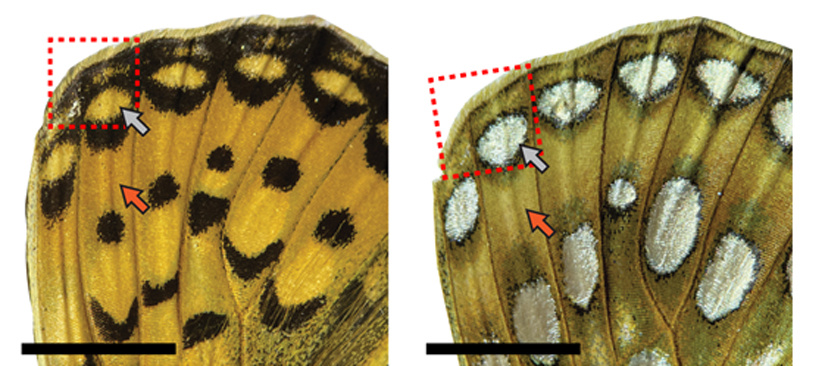Animals utilize a rich and diverse palette of colors for sexual and aposematic signaling, and they produce these colors in a variety of ways. Pigmentary colors, for example, result from molecules that absorb certain wavelengths, whereas structural colors arise from nanostructures that scatter light in a wavelength-dependent manner. Although colors are commonly classified as either pigmentary or structural, many animals create vibrant color signals using a combination of absorption and scattering. The diverse color displays on the wings of butterflies are created using multiple types of light-interacting components. Some scales are packed with light-absorbing pigments, and butterfly species employ different types of these pigments to achieve different colors. Other scales have nanostructural modifications, which can give the appearance of white or silver through broadband scattering or specific colors though narrowband scattering. By altering the types and locations of these scales, it is thought that butterflies can independently modify the appearances of their dorsal and ventral wing surfaces.
A challenge presented by the two sides of butterfly wings having different signaling functions is that the wings are thin enough that their two sides may not be optically isolated. If so, the appearance of one wing surface could impact the appearance of the other, a potential source of both evolutionary innovation and constraint. In their new study titled "Two sides of the same wing: ventral scales enhance dorsal wing color in the butterfly Speyeria mormonia", Drs. Dan Chappell, Carol Boggs and Dan Speiser tested whether the highly reflective silver patches found on the ventral sides of wings in the Mormon fritillary, Speyeria mormonia, affect the appearance of their orange-and-black patterned dorsal wing surfaces. Using reflectance spectroscopy, they found that ventral scales, either silvered or non-silvered, make dorsal orange patches significantly brighter, with the silvered scales having the greater effect. Computational modeling indicates that both types of ventral scale enhance the chromatic perceptual signal of dorsal orange patches, with only the silvered scales also enhancing their achromatic perceptual signal. Altogether, these studies reveal a lack of optical independence between the two sides of the wings of S. mormonia, which suggests that the wing surfaces of butterflies have intertwined signaling functions and evolutionary histories.
